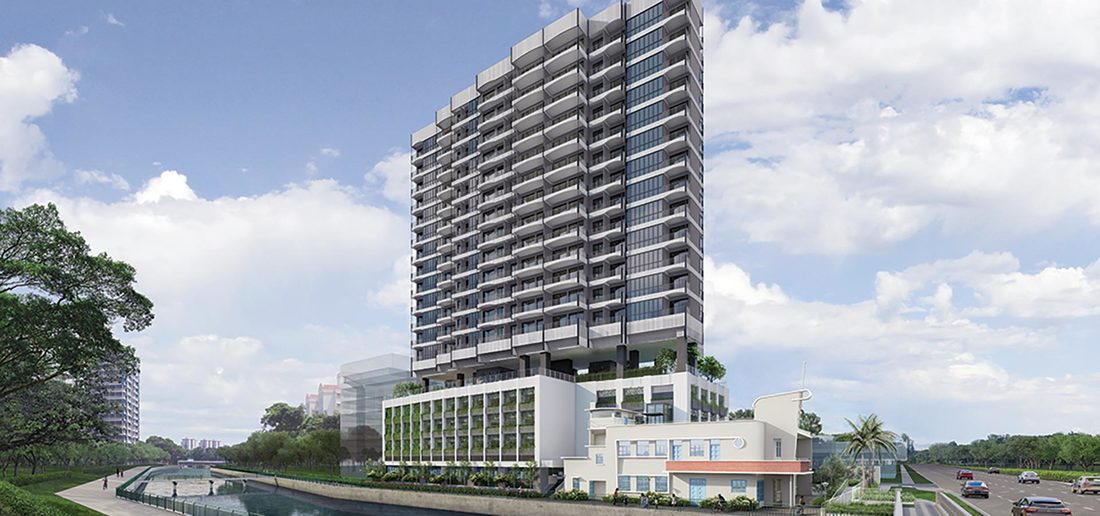Malaysia said it will take all effective measures to de-escalate the situation on the ground and handle the ongoing maritime boundary dispute with Singapore in a calm and peaceful manner. It also reiterated the importance of strong bilateral relations, and hoped that talks on resolving matters would start expeditiously, Malaysia's Foreign Ministry said in a statement. Singapore responded by saying it is "encouraged" that Malaysia has said it will take all effective measures to de-escalate the situation. Singapore also welcomes the Malaysian government's agreement that officials meet in the second week of January to exchange views on resolving the Johor Baru port limits issue, said the Republic's Ministry of Foreign Affairs (MFA). Still, MFA said Singapore is "disappointed" that Malaysia is unable to accede to its proposal to revert to the pre-Oct 25 status quo. The Johor Baru port limits were unilaterally extended by Malaysia that day, with Malaysia claiming waters belonging to Singapore as its own.
Six moneylenders with unique business models issued new licences
It is the first time in six years that MinLaw is issuing new moneylending licences since a moratorium was imposed in 2012. The one-time lifting of the moratorium is part of an initiative to better protect borrowers through business-led improvements. The new models include more comprehensive use of data to assess creditworthiness, using digitalised processes to lower cost and giving better terms to those who repay their loans early or on time, MinLaw said. All six firms have paid-up capital of at least S$1 million and demonstrated a track record in providing consumer credit, whether in licensed moneylending or in other sectors of consumer credit. MinLaw said there are currently 162 moneylending outlets in Singapore. The new licensees will be allowed to operate for up to two years from next year, after which MinLaw will evaluate the results of the pilot and consider options for refining the moneylending regulatory regime.
Trade tensions seen among 2019's top business risks
Trade tensions between China and the United States, nationalist politics and increased environmental regulation are among the top risks for firms in 2019, according to specialist risk consultancy Control Risks' annual look at the year ahead. In Asia, pressure on China's slowing economy will not bode well for commodity-focused economies such as Indonesia, Australia and Malaysia. And countries in the Asia Pacific - including Singapore - will increasingly have to choose between the competing visions which China and the US have for Asia. Another risk is that amid rising nationalist sentiment, multinationals will come under pressure. In Asia, as economies cool, politicians may "play the nationalist card" in areas such as foreign investors' access to sectors, and preferential policies for local companies. Climate change will not only bring business disruptions through extreme weather - from storms and floods to droughts and fires - but also encourage politicised environmental regulation.
Economy watchers trim Singapore 2019 GDP forecasts
Singapore is headed for a slowdown, private-sector analysts said, while agreeing that the US-China trade war is the top risk to the economy. Growth in next year's gross domestic product (GDP) is expected to ease by a wider margin than was projected three months ago, according to the latest quarterly survey by the Monetary Authority of Singapore (MAS). The manufacturing sector - where the linchpin electronics segment has hit a bump - could continue to weigh down the Singapore economy, with the long-awaited recovery in construction perhaps unable to offer relief. Economists trimmed their forecast for next year and predicted that Singapore's growth will come in at 2.6 per cent, down from the 2.7 per cent forecast earlier. For 2018, GDP growth is expected at 3.3 per cent, 0.1 point lower than the projection from a similar poll in September - even as 2018's full-year estimate was bumped up from 3.2 per cent.
Online shoppers in Singapore are second only to their counterparts from Hong Kong in the AsiaPacific when it comes to making purchases from overseas, particularly from Chinese websites. An Ipsos study commissioned by PayPal found around 73 per cent of online shoppers here bought items from overseas in the past year, with 14 per cent shopping exclusively on foreign websites. Ipsos is a market research and consulting firm based in France. The results showed that 75 per cent of shoppers in Hong Kong made cross-border online purchases. Ipsos surveyed more than 34,000 respondents in 31 markets from March to May this year for the study, including 1,000 from Singapore. Clothing, footwear and accessories topped the list of most popular categories of items bought online, with around 70 per cent of respondents in Asia buying at least one item in the past year. Global shoppers mostly went to online stores based in China, with respondents citing better prices as the primary reason. The rise of international e-commerce in Singapore is a positive sign at a time when countries are putting up more barriers as trade protectionist sentiments grow around the world, concluded a panel of industry insiders while discussing the PayPal report at Republic Plaza.
Singapore's consumer confidence hits 3-year high in Q3
Consumers remained pessimistic about their lot in the economy but felt a little bit cheerier in the third quarter. In fact, confidence in the three months to Sept 30 rose to its highest level since it entered gloomy territory three years ago. The Singapore Consumer Confidence Index was at 98 points for the quarter, up from 94 in the previous three months. Any score below 100 denotes pessimism. The index has been in pessimistic territory - and below the global index level as well - since the fourth quarter of 2015, when it dipped from 101 points to 94. Three indicators underpin the index: consumers' perception of the state of their personal finances, local job prospects and their spending intentions. Singapore recorded improvements in all three, both on year-on-year and quarter-on-quarter bases.
Retail sales up 0.1% in October, way below forecast
Retail sales ticked up slightly in October but came in well below market expectations. Takings at the till rose just 0.1 per cent over the same month last year - a far cry from the 1.9 per cent increase in September and a mile short of the 1.5 per cent tipped by analysts polled by Bloomberg. Excluding motor vehicles, retail sales rose 0.5 per cent. Car sales fell by 2 per cent year on year, noted the Department of Statistics. However, takings at department stores dropped 3.6 per cent, and those at supermarkets and hypermarkets were down by 2.9 per cent compared with October last year. Retailers of optical goods and books recorded sales declines of 1.9 per cent, while those selling recreational goods saw a drop of 1.8 per cent. The total retail sales value in October was about $3.7 billion, with online accounting for an estimated 5.3 per cent.
Singapore is generally doing well in investing in human capital and is well positioned to deal with the changing nature of work, experts and the World Bank said. The World Bank noted that although there were concerns that technology would replace jobs, new platforms will create employment opportunities in fresh areas. "Robot density per worker in 2018 is the highest in Germany, Korea and Singapore. Yet in all of these countries, despite the high prevalence of robots, the employment rate remains high," it said. New platforms such as Grab expand job opportunities and Singapore is able to take on these changes.
Job market picks up, but hiring may be easing
The labour market continued to improve in the third quarter of this year, but several indicators show that hiring may be slowing amid global uncertainties. Between July and September, more people were employed here and fewer lost their jobs, compared with the preceding three months. Official figures released by the Ministry of Manpower (MOM) showed that total employment, excluding foreign domestic workers, grew by 16,700 from July to September. This was the fastest rate in four years, surpassing even the preliminary estimates of 15,200 released in October. Observers said this is likely driven by good economic growth in the first half of the year. But overall unemployment crept up slightly, and the proportion of residents who found work last quarter within six months of being retrenched slipped to 62 per cent, down from 64 per cent in the second quarter. Lower re-entry rates were seen across all age groups.








 RSS Feed
RSS Feed
